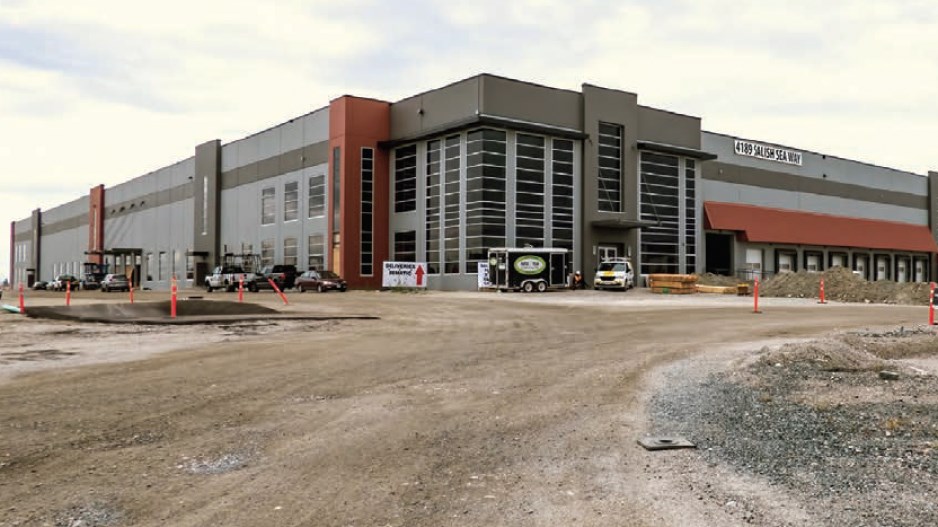There are few B.C. communities walking as narrow a tightrope between economic development and environmental stewardship as the Tsawwassen First Nation (TFN).
That balancing act was centre stage this month when TFN members asked Vancouver Fraser Port Authority (VFPA) officials to reconsider the environmental impact of the proposed Roberts Bank Terminal 2 expansion, which would add landfills to the port facilities and the connecting causeway.
At the June 1 hearing held by an independent panel appointed by Environment and Climate Change Canada, new TFN Chief Ken Baird urged authorities to provide more details – and consider all mitigating alternatives where possible – on a project that could threaten the livelihoods of the 500-member First Nation.
“Over the past several decades, we have seen a steady rate of development in our territory,” Baird said at the panel hearing. “These changes are affecting our lands and waters, and reducing our access to the resources that are critical to our culture and well-being.”
If approved, the expansion will add 108 hectares of new industrial land in the waters adjacent to the GCT Deltaport terminal. The VFPA has said the terminal would create 1,500 jobs once completed while also creating much-needed container capacity.
Baird, however, said members living on TFN land are concerned about a number of issues they feel the VFPA has not adequately addressed, including the possible introduction of invasive species, traffic gridlock created by increased truck traffic, degraded water quality and damage to the local wildlife.
Chief among TFN’s concerns is the potential damage to salmon and crab fishing, which Baird said is a staple in the community’s food supply. He noted that the GCT Deltaport and BC Ferries terminal traffic and infrastructure have already reduced salmon populations.
“For many of our members, salmon fishing is changing from an annual tradition to something that only happens once every four years,” Baird said. “The decline of Fraser River salmon means we must look elsewhere for our traditional foods.… Our growing reliance on crab helps explain why we have raised this project’s effects on crab as one of our key concerns.
“We believe that the project will result in a net loss of optimal and accessible crab fishing area,” he added, referencing an independent TFN crab study. “Presently we can [catch crabs] year-round. We know that in the near future we’ll probably be put on a quota again, like the salmon.”
The nation’s balancing act comes from the fact that TFN has been very active in its development of land for commercial purposes – some of which are linked to the community’s proximity (and industrial land availability) to economic activities at the existing Deltaport. Last September, online retail giant Amazon.com Inc. (Nasdaq:AMZN) secured a lease from TFN at the Delta iPort industrial park for a 450,000-square-foot space – a facility that is now nearing completion.
Amazon’s new e-commerce facility will be the first phase of the 57-acre park, according to TFN officials. Delta iPort will contain as much as one million square feet of leasable distribution space once completed.
“Tsawwassen First Nation welcomes Amazon to our Lands,” then-Chief Bryce Williams told Western Investor at the time of the announcement. “This is a promising advancement that will continue to unlock the potential of the Twawwassen First Nation as a leading development partner.”
But members at the panel hearing noted that there has to be a limit to the development to prevent more irreversible harm to the community, and many at the TFN have described Terminal 2 as a bridge too far.
“Due to the changes in our foreshore from the development on our beaches, they have become sludge,” said TFN member Louise Ahlm. “We can no longer walk in the waters to harvest our crab and our clams and use the water to cook our seafood.… Also, there is a buildup of black silt on a lot of our TFN homes.… We thought it was from the coal port, but we have been informed it’s from the diesel from the trucks and the ships.”
The VFPA said it is working with TFN to address many of these issues. Offsetting projects – such as restoring other parts of the coast – that are based on almost 10 years of Terminal 2-specific studies are part of the consultation process and will be committed to if Terminal 2 gets approval to go ahead.
“We have heard that support is needed to conduct additional eulachon and sturgeon studies,” said VFPA vice-president of infrastructure Cliff Stewart at the hearing. “We were pleased to have been able to announce our commitment, just last week, to funding in the amount of $500,000 for these studies, should this project proceed.
“I heard some things today that were hard to hear.
And I think were hard to say.… We appreciate that openness. And I heard some things that surprised me, frankly, that we need to explore some more.”
Stewart did note, however, that a 2018 Mercator International study showed there would be a drop in the number of container ships in and around the Port of Vancouver in the coming years as the industry moves towards larger vessels, meaning the area will not see more boat traffic as a result of Terminal 2.
Baird, however, said port officials need to seriously consider the concerns brought to the table by TFN – and that consultations will not be a matter of formality.
“You can’t put a price on some of this stuff, on some of our foreshore and some of our culture,” he said.
“All I know is: when it comes time for me to sit at that bargaining table, I’m going to be tough to deal with. And whatever you offer is probably not going to be enough.
“As a progressive, forward-looking nation we are not opposed to all development. But we must ensure that development and growth happen in a way that is sustainable. We must also decide when there has been enough development.” •




